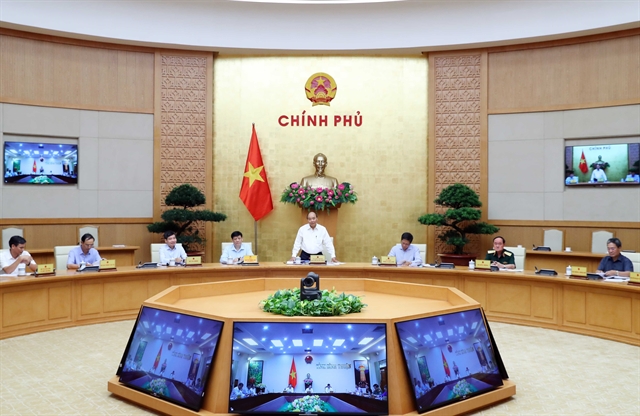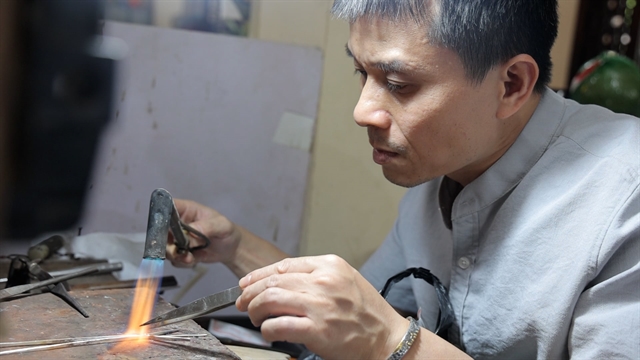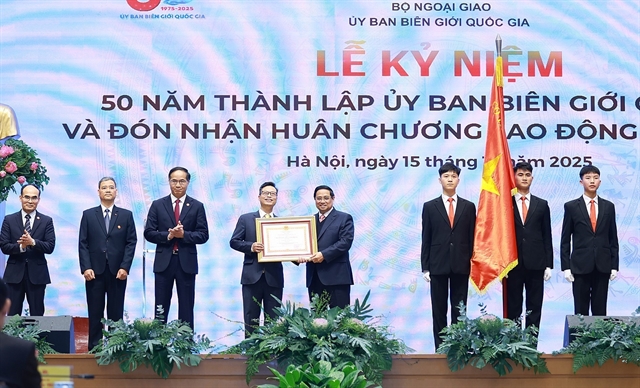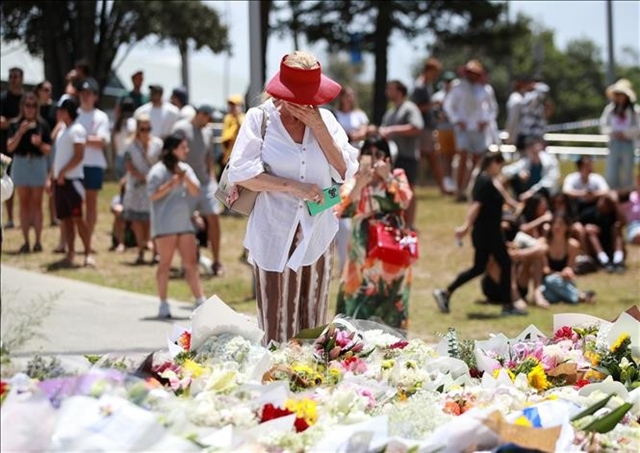 Politics & Law
Politics & Law


|
| Prime Minister Nguyễn Xuân Phúc (centre) had a virtual meeting with Bình Thuận Province's authorities on Thursday in Hà Nội regarding socio-economic development progress for the year. — VNA/VNS Photo |
HÀ NỘI — Prime Minister Nguyễn Xuân Phúc on Thursday had virtual meetings with the leaders of Bình Thuận and Đắk Nông provinces to discuss socio-economic performance.
Bình Thuận has numerous strengths for socio-economic development, including its sizable land area, deep-water port and large fishing area, diverse mineral resources and huge potential for renewable resources, not to mention the hardworking people with a vibrant culture, PM Phúc said.
The province's Gross Regional Domestic Product (GRDP) in 2019 stood only at 32nd out of the 63 provinces and cities in Việt Nam, but within the first six months of this year, its GRDP hit 18th position, PM Phúc noted.
At the meeting, Chairman of Bình Thuận People’s Committee Nguyễn Ngọc Hai said the GRDP growth of the province in the first six months of 2020 reached 3.81 per cent, with the value of industrial production, its main growth driver, hitting VNĐ17.2 trillion.
Due to the COVID-19 pandemic, however, the province’s tourism, services and export activities were all severely hit.
In the first six months, tourist arrivals to the province fell by 46 per cent and revenues by 37 per cent compared to the same period last year. As Việt Nam is still not open to international visitors, the province is looking at ways to draw more domestic tourists, Hai said.
By June 30, the province had disbursed 38.4 per cent of the total public development investment capital (more than VNĐ3 trillion, or US$129.7 million), and the rate hit 42 per cent by July 21.
Among key projects of national importance, Bình Thuận has been focusing on a 160.3km section of the North-South Expressway.
To date, the province has handed over 93 per cent of the required land to the project management unit and disbursed 71.3 per cent of investment capital for the project’s components.
Bình Thuận authorities said that by the end of August, the province could hand over the ground to commence the two sections of the Phan Thiết-Dầu Giây and Phan Thiết-Vĩnh Hảo expressways.
The Vietnamese Government leader lauded local authorities for setting the target of disbursing 100 per cent of its allocated public investment budget within the year.
PM Phuc also asked that the province step up drought mitigation efforts and ensure water supply for the people, for both household and agricultural use.
The province should also strike a balance between its extractive industry and tourism industry so the two activities do not clash and undermine each other, he said.
Bình Thuận must focus on developing highly skilled human resources and building e-government and e-commerce, he added.
Đắk Nông
Later, during a meeting with the Central Highlands province of Đắk Nông, PM Phúc said that for a remote and mountainous locality with a large ethnic minority population, poverty reduction must be a high priority.
Đắk Nông’s rate of public investment capital disbursement reached only 35 per cent so far, PM Phúc said, asking that the local leadership be more proactive to make use of this resource.
The Government has stressed that any locality that fails to disburse the capital would have its capital allocated elsewhere.
Đắk Nông should develop industries such as mining, agriculture produce processing and hi-tech agriculture, he said.
PM Phúc asked the province to better manage land and forests, raise forest coverage in the province and pay attention to developing human resources to resolve poverty issues.
According to reports from Đắk Nông People’s Committee, during the first half of the year, the province posted economic growth of 6.09 per cent, the second-highest rate in the Central Highlands.
It is aiming for 7.91 per cent growth by the end of 2020 and reducing the poverty rate by 3.5 per cent. — VNS




